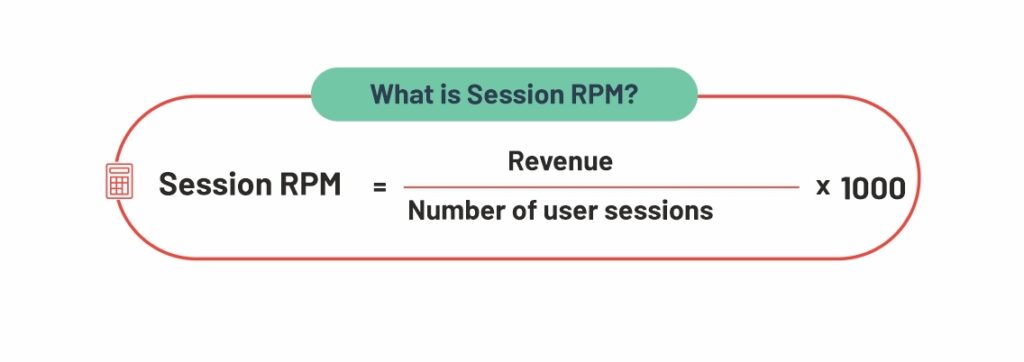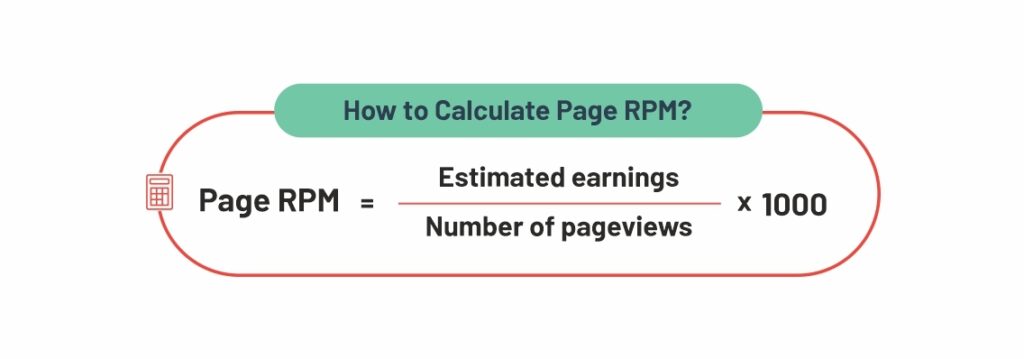What is Page RPM?
The Page RPM metric supports publishers to recognize the actual performance of their ads on a page level. This way, a publisher can identify low-earning pages and strategize how to progress and advance their performance. Page RPM = Revenue / Number of page views x 1,000. Page RPM is an exceptional proportional metric to assess multiple page performance on a specific website. Page RPM showcases a broader picture to the publisher about what’s going on with the pages concerning revenue at any corresponding period, page to page, or more.
Table of Contents
What is RPM?
First, let’s look at the abbreviation ‘RPM,’ a valuable metric that publishers can utilize to recognize their performance and put it under scrutiny – RPM stands for Revenue Per Mille. The RPM or Revenue Per Mille can be defined as the revenue per thousand impressions, where ‘mille’ stands for 1,000. There are two kinds of RPM accessible by publishers:
- Page RPM – page revenue per thousand impressions
- Session RPM – session revenue per thousand impressions
Let’s jump in and look at the key purpose of each type of RPM and how it assists publishers to monitor and flourish in overall website earnings. RPM or revenue per mille is a standard metric used by most advertising platforms such as ad networks and ad servers. RPM exemplifies the publisher’s revenue for every 1,000 page views on a publisher’s website. For RPM calculation, an individual can divide the Revenue by Total Page Views and multiply it by 1,000.
What is session RPM?
Session RPM is an imperative metric while evaluating overall site performance. Session RPM responsively shows a site’s ad earnings per visitor. Session RPM offers publishers a better understanding of which landing pages gain revenue the most.

How to calculate Page RPM?

How to increase Page RPM?
If you want to increase page RPM, you will need to invest more time in the below-mentioned factors, not just improving your content, engagement with the audience, or diversifying the revenue streams. This actionable insight will help you in page RPM optimization:
Layout optimization can be referred to as the testing and implementing ad units that fetch the publisher the best rate in the market. Ad layout optimization highly depends on the responsive layout of website or web pages, places on the pages with excessive user interactions, trendy ad units, and multi-device compatibilities like mobile, tablet, or desktop.
Auto-refresh ads or ad refresh is a unique method that grants publishers the ability to increase the number of impressions served per pageview by refreshing ads for dynamic users based on predetermined triggers. Remember, more impressions straightway render noteworthy revenue generation. It works well on sites that comprise higher session duration and time on page, eg., online game sites.
After optimizing the impressions by using in view ad refresh and improved viewability via layout optimization, the next step is to diversify and use Header Bidding where multiple demand partners can compete and bid on an impression and thus increasing the bid pressure. It will decrease the number of unfilled impressions and increase the page RPM.
Bonus Tips to Increase Page RPM: If you are using Google AdSense and have started getting good results, you should opt for GAM (Google Ad Manager) for better optimization. Similarly, applying header bidding can considerably improve your page RPM; however, it is crucial to enhance header bidding performance for continuously maximum yield.
Recent Articles
What is Ad Fill Rate?
Introduction Modern-day websites are attractive digital constructs that relay pertinent information to the visitors while maximizing their user experience. The primary objective …
What is CPV?
Introduction Online advertising is a dynamic part of the digital world. Advertising comes in many shapes and forms yet always has to …
What is CPC?
Introduction Advertising is a prominent part of Digital Marketing. Whether you’re running your website or trying to increase your outreach on a social media platform,